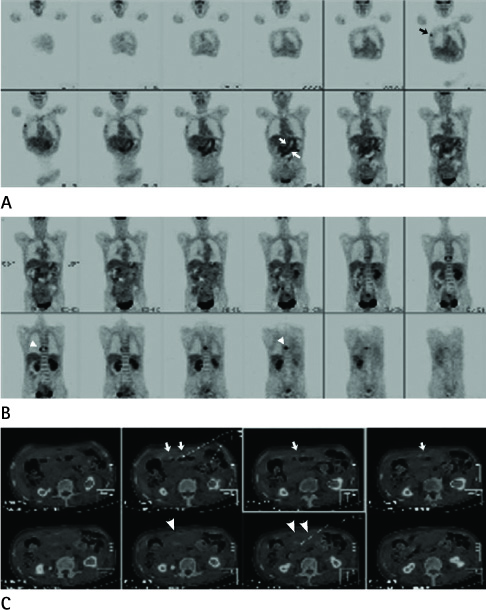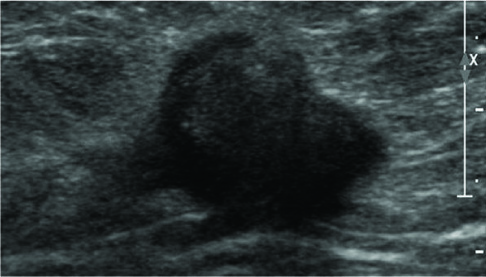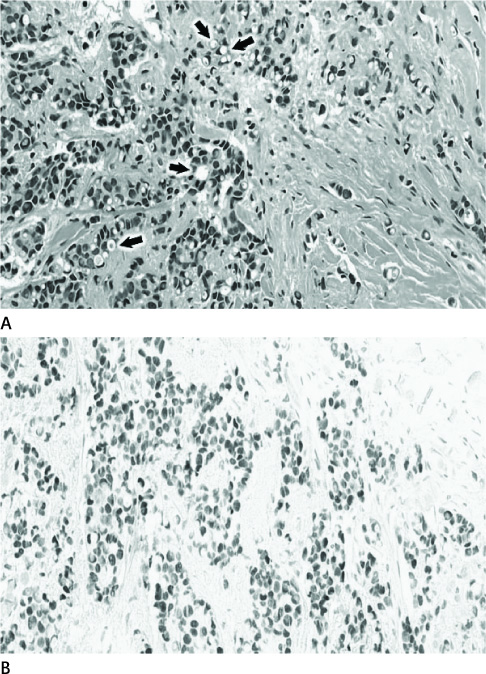J Korean Soc Radiol.
2012 Feb;66(2):177-181. 10.3348/jksr.2012.66.2.177.
Occult Invasive Lobular Carcinoma of Breast Detected by Stomach Metastasis: A Case Report
- Affiliations
-
- 1Department of Radiology, Bundang CHA General Hospital, CHA University College of Medicine, Seongnam, Korea. hhkkjung@hanmail.net
- KMID: 1439411
- DOI: http://doi.org/10.3348/jksr.2012.66.2.177
Abstract
- Gastric metastasis from primary breast cancer is a rare phenomenon that is more prevalent in the invasive lobular type of breast cancer. We describe a very rare case of occult invasive lobular cancer of the breast detected by the initial presentation of gastric metastasis in a patient without a history of breast cancer. A 18F-fluorodeoxyglucose positron-emission tomography/computed tomography (FDG PET/CT) which showed increased FDG uptake in the stomach, abdominal mesentery and the right breast, and played pivotal roles in the detection of occult primary breast cancer and a diagnosis of gastric metastasis as an ancillary method for obtaining histological results and immunohistochemical stains.
MeSH Terms
Figure
Reference
-
1. Choi SH, Sheehan FR, Pickren JW. Metastatic involvement of the stomach by breast cancer. Cancer. 1964; 17:791–797.2. Taal BG, Peterse H, Boot H. Clinical presentation, endoscopic features, and treatment of gastric metastases from breast carcinoma. Cancer. 2000; 89:2214–2221.3. McLemore EC, Pockaj BA, Reynolds C, Gray RJ, Hernandez JL, Grant CS, et al. Breast cancer: presentation and intervention in women with gastrointestinal metastasis and carcinomatosis. Ann Surg Oncol. 2005; 12:886–894.4. Ferri LE, Onerheim R, Emond C. Linitis plastica as the first indication of metastatic lobular carcinoma of the breast: case report and literature review. Can J Surg. 1999; 42:466–469.5. Elliott LA, Hall GD, Perren TJ, Spencer JA. Metastatic breast carcinoma involving the gastric antrum and duodenum: computed tomography appearances. Br J Radiol. 1995; 68:970–972.6. Pera M, Riera E, Lopez R, Viñolas N, Romagosa C, Miquel R. Metastatic carcinoma of the breast resembling early gastric carcinoma. Mayo Clin Proc. 2001; 76:205–207.7. Tremblay F, Jamison B, Meterissian S. Breast cancer masquerading as a primary gastric carcinoma. J Gastrointest Surg. 2002; 6:614–616.8. Ciulla A, Castronovo G, Tomasello G, Maiorana AM, Russo L, Daniele E, et al. Gastric metastases originating from occult breast lobular carcinoma: diagnostic and therapeutic problems. World J Surg Oncol. 2008; 6:78.9. Pectasides D, Psyrri A, Pliarchopoulou K, Floros T, Papaxoinis G, Skondra M, et al. Gastric metastases originating from breast cancer: report of 8 cases and review of the literature. Anticancer Res. 2009; 29:4759–4763.10. Kwee TC, Basu S, Cheng G, Alavi A. FDG PET/CT in carcinoma of unknown primary. Eur J Nucl Med Mol Imaging. 2010; 37:635–644.
- Full Text Links
- Actions
-
Cited
- CITED
-
- Close
- Share
- Similar articles
-
- Nodular Metastatic Carcinoma from Invasive Lobular Breast Cancer
- Peritoneal and gastric metastasis from invasive lobular breast carcinoma: a case report
- Synchronously Diagnosed Gastric Metastasis from Invasive Lobular Breast Carcinoma, Mimicking Primary Gastric Carcinoma
- Invasive Lobular Carcinoma of the Breast Associated with Mixed Lobular and Ductal Carcinoma In Situ: A Case Report
- Abdominal Wall Metastasis from an Invasive Lobular Carcinoma of the Breast: A Case Report






